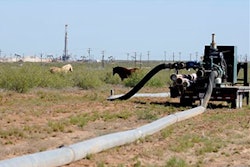COLUMBIA, S.C. (AP) — A small radioactive water leak prompted Duke Energy Corp. to shut down a reactor Monday at the Oconee Nuclear Station in South Carolina.
Utility officials said the leak in Unit 1 poses no danger, but it is the second time in less than three weeks a problem has shut down a reactor at the nuclear plant near Seneca built 40 years ago.
Engineers first noticed the possibility of the leak Friday in the airtight, steel-lined concrete containment building designed to prevent any radiation from leaking into the air or ground. They spent the weekend trying to pinpoint its location and severity, Duke Energy spokeswoman Valerie Patterson said.
"This event poses no threat to employees or the public. It is in the containment building, which is doing what it is designed to do," Patterson said.
The water is used to cool the reactor. The leak is less than one gallon every 10 minutes and has happened at other reactors across the country before, according to Duke Energy.
The reactor was shut down Monday so repairs could begin. There is no timetable of when the work will be finished or when the reactor will be brought back online, Patterson said.
Duke Energy reported the problem to the Nuclear Regulatory Commission. A spokesman for the federal agency couldn't be reached on Monday, which was the Veterans Day holiday.
Oconee Nuclear Station has three reactors, and one of them was already offline for refueling before Monday's shutdown of Unit 1. Patterson said Duke Energy can continue to meet the power needs of its customers even with only Unit 3 generating electricity.
Unit 3 was shut down Oct. 24 when engineers discovered a faulty control valve was causing changes in the flow of water in a different system that generates steam to turn the turbines and create power. That reactor started generating power again three days later and was fully operational on Oct. 30, according to NRC data. The water in that system is separate from the water that cools the reactor.
A Government Accountability Office report released in October found that, since 2000, the Oconee Nuclear Station reported the most safety violations of any nuclear plant in the Southeast.
The plant reported 163 lower-level violations and 14 higher-level violations. Lower-level violations pose very low risk, such as improper upkeep of a transformer, while higher-level violations range in significance, such as an electrical system that caused a fire.
Duke Energy has pointed out the plant is only one of two in the Southeast and three in the entire country with three reactors.
The Browns Ferry plant in Decatur, Ala., reported 135 lower-level violations and six higher-level violations, while the Palo Verde plant in Wintersburg, Ariz., reported 299 lower-level violations and five higher-level violations since 2000.






















